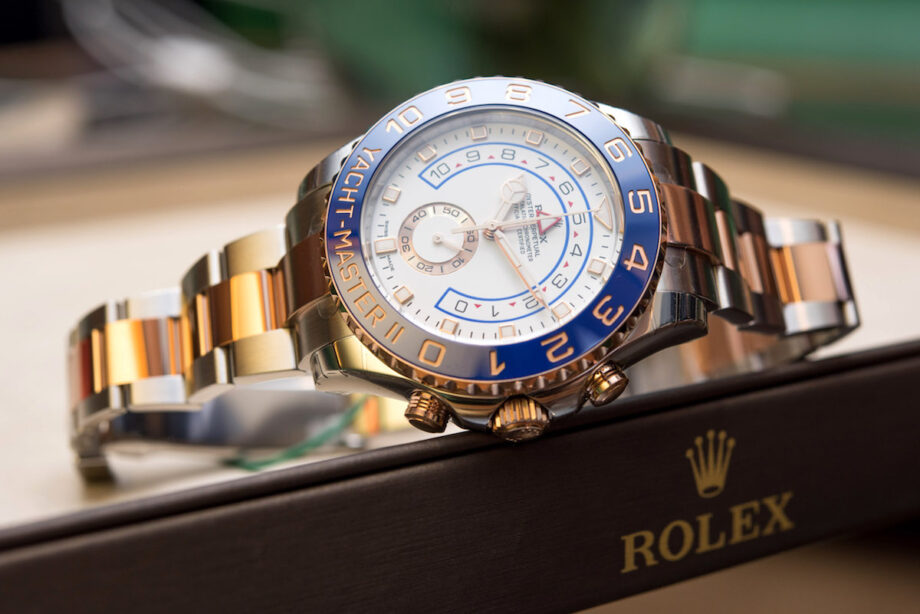Nothing says opulence like a gold watch.
Not only is real gold immediately recognisable and immediately eye-catching, but it's also a clear sign of wealth: with gold currently fetching just under 81 AUD a gram (and continuing to enjoy a steady rise, ABC News reports), you can be carrying around several thousand dollars of value in raw materials alone.
But gold has two big downsides when it comes to watchmaking. Firstly, gold is quite heavy compared to other common watch materials such as steel or titanium, so it's arguably less comfortable. Secondly, gold is quite a soft material, so it's scratched and damaged quite easily.
It's less shiny if it's scratched, too – so many gold watch owners elect to get their watches polished after a few years of wear and tear. Polishing a gold watch is a painstaking process that requires a great deal of expertise and a steady hand. It's a process that's mesmerising to watch as well. Case in point: this video from YouTube's CRM Jewelers.
CRM Jewelers give us a glimpse inside the workshop of Miami-based watch repair studio Chrono Sky as they polish an 18ct yellow gold Rolex Yacht-Master II (ref. 116688). The 44mm chronograph, which retails for 61,350 AUD (~ 47,580 USD) and contains over 192g of gold is a favourite of celebrities like Conor McGregor, David Beckham and Mark Wahlberg. Being a Rolex, you need to have Midas' touch to be able to work on it (we'll see ourselves out...)
Chrono Sky's experts effortlessly restore the scratched Yacht-Master II to its former glory – but as the video reveals, it comes at quite the cost.
While the polishing process is incredibly satisfying to watch, CRM Jewelers relate that despite the lightness of Chrono Sky's touch, the watch has lost a not-insignificant amount of value.
The maths works out like this: polishing removed 0.85g of gold from the watch. Using this morning's gold price of 81 AUD a gram, and remembering that 18ct gold is only about 75% pure gold, polishing has removed 51.64 AUD worth of gold. (The video's figures are different, as they're not only calculating in USD but also using an outdated, lower gold price.)
RELATED: Finance Expert’s Warning For Australians Investing In Gold
But that $51.64 figure is somewhat misleading, as the raw material value of a watch is only a portion of its price. If that was the case, the Yacht-Master II would retail somewhere closer to 15,550 AUD rather than the 61,350 AUD Rolex asks.
Many watch nerds consider polishing or aggressively restoring a watch, particularly a vintage watch, utterly sinful. Scratches tell a story: it's almost impossible to re-create the natural wear and tear a watch accumulates over time from day-to-day usage; the battle scars of a well-loved watch.
One YouTube commenter put it best: "it's not about the grams that it loses, it's about the original patina that in time [will make it] lose value."
It might be counter-intuitive, but a watch with more patina can sometimes fetch a higher price over one that's not as worn. Take these two otherwise identical Rolex GMT-Master IIs (ref. 1675) that sold last year in Sydney: the more worn one sold for $7,000 more than the less worn one. The argument could be made that by polishing this Yacht-Master II, they've damaged its value in the long run.
It's a contentious debate, for sure. The other side of the debate would say that people should be able to do whatever they want with their watches. If they'd rather polish their watch and keep it looking flawless, by all means. But it won't stay that way forever, and there's a limit to how much you can (or should) polish a watch, especially a gold watch.
Read Next
- ‘Sporty’ Watch Selling Trick Can Make You Thousands
- Good ‘Aussie’ Bloke Russell Crowe Answers The Question On Every Watch Geek’s Lips
Subscribe to the DMARGE newsletter
Follow DMARGE on Instagram
Follow DMARGE on Facebook
The post Rolex Yachtmaster-II Video Reveals True Cost Of Polishing Your Watch appeared first on DMARGE.
from DMARGE https://ift.tt/3rYVa8w








0 comments:
Post a Comment